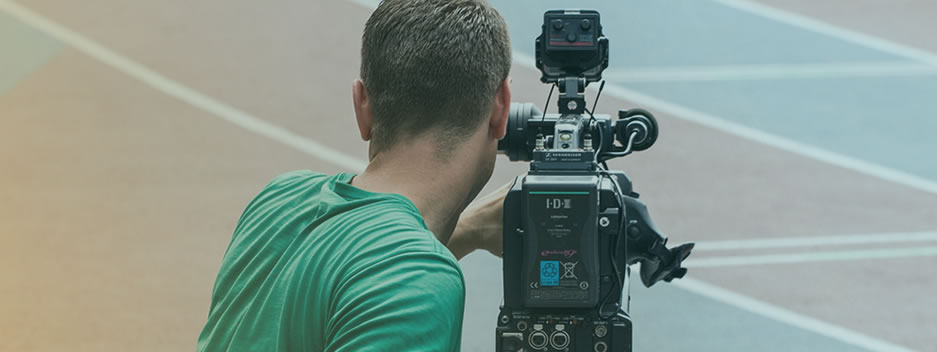Make TV Your New Favourite Coaching Tool
- February 21st, 2019
- Tom Bean

In an age where 24-hour live sport is almost a guarantee, a moment rarely passes where your players can't be learning and developing. The accessibility of the internet and television for today's youngsters is consistently scrutinised; however by embracing them, it's easy to recognise the opportunities they present as a tool for us coaches.
Video analysis is not a new concept - in top level sport, video sessions are almost as regular as physical training sessions and are afforded a lot of time and effort. Videos are used to understand areas to exploit in upcoming opposition, to recognise aspects of play to improve and to take ownership over performances. As a result, a players development should involve establishing the skills to be able to watch performances back to understand trends in play, strengths and weaknesses etc.
However, since most young players and grassroots coaches do not have the resources to be able to film games and/or access footage on other teams, a players analytical development is often easily overlooked. This is where the abundance of live sport and highlights packages on TV and the internet declare themselves as valuable resources.
It's easy to assume that 'viewing' sport requires little to no skill and you'd be right. However to analyse the game by properly 'watching' requires a set of skills that must be learnt.
As a coach, setting some small but enjoyable homework tasks to watch games on the TV and to analyse them is a great way to teach players how to 'study' the game - depending on players age and ability, tasks can be adjusted accordingly. Once equipped with the analytic skills to scrutinise matches, their sporting brains become capable of appreciating the influence on their own performance.
The Long-Term Athlete Development programme (LTAD) by I. Balyi, R. Way & C. Higgs (2013) outlines the curve of development for young athletes, focussing on their physical attributes. Discover how these skills we have outlined fit into the LTAD with a focus on your players analytical development.
Learn to Watch
Between the ages of 8-12, the LTAD suggests children are ready to begin developing foundational skills - this is no different for analytical skills.
At this age, children like to "admire and imitate older people and share their thoughts and reactions in co-operative environments" (L. Seth, 2019). They recognise outcomes but perhaps don't fully appreciate why or how they came about.
The case is the same for team and individual sports - young players will copy their favourite players so get them to watch a game or some highlights and get them thinking about why. Ask them:
- What was your favourite goal and why?
- Pick the best shot of the match in their opinion and explain why?
- What player would you most like on your team and for what reason?
Watch to Train
From 12-17, people become 'physiologically responsive to stimuli and training' and start to be responsive towards 'sports specific skills and tactics' (I. Balyi, R. Way & C. Higgs, 2013).
This is an important period for developing analytical skills to start improving problem-solving capabilities. Players at this age can start to scrutinise performances tactically as well as technically.
Get players to watch a match and ask them:
- Focus on three players from different positions and outline what attributes make them best suited to their role?
- In an individual sport, identify the main characteristics of an elite player and compare them against an amateur player. What makes them different?
- Can you identify the tactics each team has adopted? e.g. Is one playing a deeper, counter-attacking style and what benefit do they get from it?
Watch to Compete/Win
At 17+ years, the focus should be on 'optimising the engine and teaching participants how to compete' (I. Balyi, R. Way & C. Higgs, 2013) and the same approach must be taken with the use of video footage.
Players should now have the skills to recognise technical points and identify tactical styles but as a progression, must now recognise how they can use it to influence their own performance.
Watching a game on television, players should start to think about if they were in the situation, how would they need perform to exploit the opposition and compete. Ask them:
- After identifying how the one team/player (in individual sports) is playing, highlight their strengths and weaknesses and consider what tactical approach you'd take to exploit/nullify them?
- Focus on one player who plays in the same position as you. Watch how they play and what they do to help the teams tactics. Begin to use visualisation to put yourself in that position and learn from the way they play to develop your own understanding.
Video in sport has a progressively influential role on elite teams preparation, yet is still somewhat neglected at lower levels. With the volume and accessibility of live sport and online highlights however, the opportunities for grassroots coaches is there to take.
Children need to see analytical skills being fed into their development process to prepare them for what is now a fundamental part of elite sport.
So next time there is a big game coming up, get your players thinking a bit deeper when they settle down to enjoy the match - you never know where it could lead them.
Seth, L. (2019) Using televised games to help players learn. Available at: http://www.thefa.com/learning/coaching/using-televised-games-to-help-players-learn (Accessed 20 February 2019)
I, Balyi., R, Way. & C, Higgs. (2013) Long Term Athlete Development.